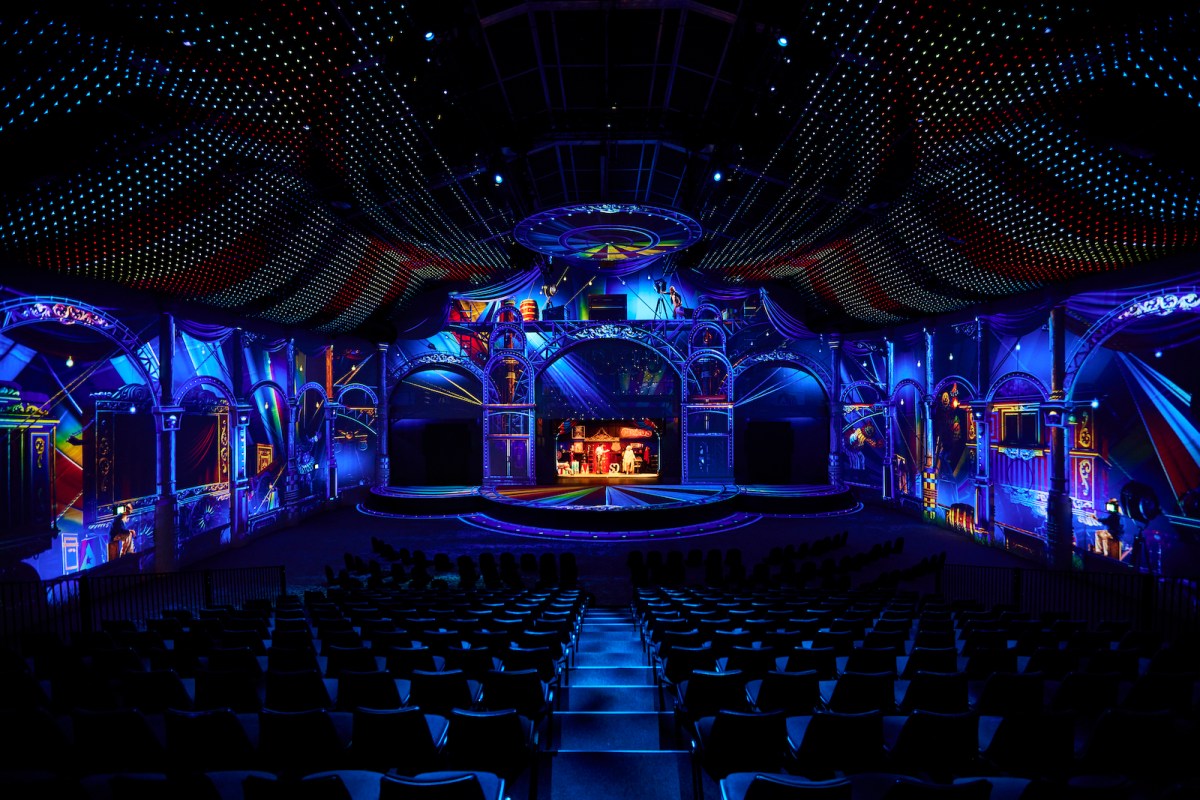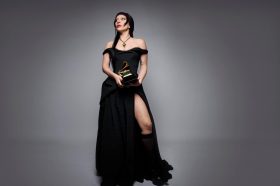Sydney’s Luna Park has struggled for decades to find a viable place in the ever-changing entertainment market of the day – not for lack of trying.
When it first opened in 1935, it offered a kind of carefree release from the Great Depression and World War II. But over the ensuing eight decades, tragedies, disgruntled local residents, legal battles, developers not delivering, shuffling leaseholds and red tape have all chipped away at Luna Park’s reputation and viability. It seemed that it could never quite claw back its former glory.
Dream Circus has been pitched as having the potential to lead the amusement park’s revitalisation, attracting a $15 million investment.
The immersive experience is the first permanent space in NSW (The LUME in Melbourne was Australia’s first). This kind of investment has been championed as part of the State Government’s embrace of creative industries as a kind of “answer all” for cultural sustainability.
You’d have to agree – it is a good idea to use technology and immersive shows to give Luna Park the injection that is needed. One only needs to consider teamLab’s permanent space in Tokyo, the mega immersive enterprise of Meow Wolf, the recently launched Sphere in Las Vegas or, indeed, the 40 immersive offerings currently in London. As Mike Rodrigues, the NSW’s inaugural 24-hour Economy Commissioner, reminded opening night revellers, ‘These experiences sell thousands of tickets.’
But let’s be honest. Dream Circus is far from on par with these other experiences, which have set the bar high globally. Instead, it is caught in some weird time warp that is part nostalgic, part new frontier, which doesn’t really understand its audience target, destroys its own potential brilliance through its script and is relying on influencers to validate its launch.
Dream Circus is being termed a high-tech “Magic Box” – aka a big top narrative that brings together the latest 3D projection technology, hologram technology, motion activated LED screens and a spatially mapped audio system across a 3000-square metre footprint. The result, however, lacks “magic”, and is encumbered by its narrative.
One of the big differences is that being seated you don’t have that swirl of imagery under foot, and the overhead activation is thin. It feels more like an extended cinema (a traditional screen bleeding to the sides), than an in the round circus setting.
Further, the lighting levels in the auditorium remain so high that you are always pulled back to the reality of being locked in tiered seating, rather than getting lost in a dreamscape, which is the whole premise of the narrative.
Setting the scene
The scene is set from the foyer. Audiences then enter the virtual big top, snaking their way along a series of vitrines that introduce “the players” with costumes and props and video profiles. They have a kind of gaming quality – the clown, the diva, Samson the strongman, Luna the performer and the ringmaster.
Pedro – the central character and big top manager – welcomes us to the experience. His office is an open door of flowing characters, and each is encouraged to hand over to their dreams. Think of it like a chorus in a song – the vignette constantly anchoring the one-hour production back, and then diverting to another world. However, it is the weakest link of this production. The antics of these clichéd characters have a whiff of not only being outdated with their stock humour and flaccid jokes, but are no longer entirely appropriate for our times (really, how many fart jokes do we need in 2023/24?). Plus, the scale and resolution of the digital characters feels poor in comparison to the surround digital-scapes.
The meat of this production is in the dream sequences, which offer greater technological scope, washing the walls with animated light and activating our imagination. Among them is an aviator, spiders, fish underwater, a roller coaster, train station and so on (no big-brainers here). The worst is a boat of jabbering clowns that do little to advance a narrative or offer an immersive moment.
Music choices are also clichéd, turning to Beethoven – Symphony No.5 in C minor – aka the “da da da duuum” riff, to a famous waltz for an octopus dance (what year was Fantasia made?).
The highlight is a song presented by a new circus act – the Dream Machine. An African American performer presented as a “new act” feels problematic, even if it is trading off a wave of holographic concerts of recent years. But the visual moment did have a punch of energy and offered a lift not yet seen.
The production concludes with Luna singing her big number with the refrain, ‘let my light shine’, leaving punters with a glowing high message of hope. But it lacks the depth and connection that musical theatre offers (so why compete?) and you end up being caught between genres, and again confused about what it is you are actually watching. In fact, following the spectacle of the Dream Machine, this confusion is doubly felt.
There is the spectacular, and the technology is there in Dream Circus, but it gets suffocated by storytelling. It feels as if in the attempt to tick a box to appeal to everyone – and to maximise ticket sales – the production has lost its clarity. While wanting to give a nod to Luna Park’s heritage and the great genre of the circus of yesteryear, perhaps it needs to be remembered that many in the audience would never have stepped inside a big top. Today’s kids grow up glued to screens and handheld devices. They are a savvy tech audience. And those attending to have “a new immersive experience” will feel disappointed.
Luna Park CEO John Hughes told the opening night audience, ‘We’ve got a responsibility, and that’s to really embrace this and really spread the word about it … this is not just a show, this is a catalyst for change in the city.’ Not so sure about that John – the medium yes, the talent yes, this production no.
Dream Circus
Luna Park, Sydney
Technicians: Artists in Motion, TDC and Auditoria
Opens 22 December 2023, as a permanent offering
Tickets: $45 adult/$35 child





